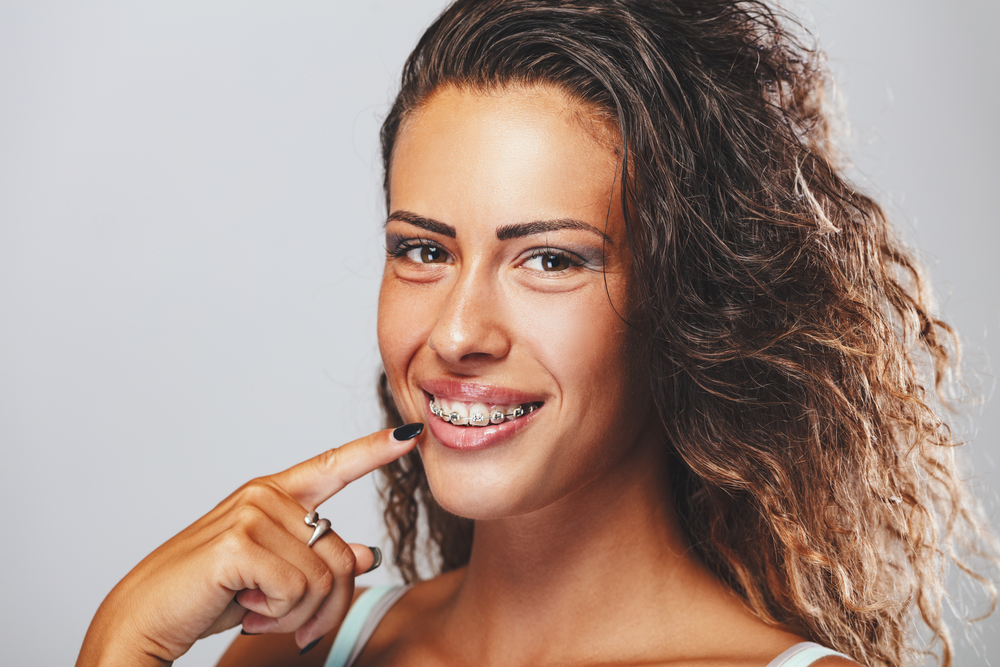
Taking great care of your teeth with braces can be a big challenge. At Thomas Orthodontics, we believe that an excellent oral hygiene routine is a significant part of finishing an orthodontic treatment with a beautiful and healthy smile.
Plaque and food can quickly accumulate around brackets and wires, which leads to tooth decay, cavities, white marks, and gum disease. Brushing is important, but flossing is essential. Flossing can be tricky with braces; however, modern tools can help make the task easier to complete. Here’s why every child with braces should be water flossing to keep their smile healthy and bright.
What is a Water Flosser?
A Waterpik is a specific brand of water flosser. These convenient handheld devices consist of a reservoir filled with water, a motor, and a pump. When combined, a gentle stream of pressurized water is pushed through the device’s tip and into the mouth. The high-pressured water streams around the teeth, brackets, and wires and under the gumline. Left-behind food particles, plaque, and bacteria are effectively dislodged. These water devices also stimulate the gums and improve overall health and wellness.
How To Water Floss With Braces
Water flossers are highly recommended for orthodontic patients because of water’s ability to clean around brackets and wires with ease. Water flossing with braces is easy and can be done in seven simple steps.
Step 1: Fill the water flosser reservoir with lukewarm water.
Step 2: Insert the orthodontic tip, if available, into the handle of the device.
Step 3: Adjust the pressure control to a comfortable level.
Step 4: Lean over the sink and place the tip near the gumline.
Step 5: Turn the device on and let the excess water flow from the mouth into the sink.
Step 6: Starting at the back teeth, aim the tip at the gumline. Move slowly along the gumline and around any orthodontic brackets or appliances.
Step 7: Clean each individual tooth in all reachable areas.
Benefits of Water Flossing With Braces
A study published in the American Journal of Orthodontics and Dentofacial Orthopedics found that a water flosser with a specialized orthodontic jet tip helped reduce plaque and bleeding gums in teenagers with braces.
Some of the many incredible benefits of water flossers include:
- Effectively dislodging pieces of food that get trapped under wires or around brackets
- Massaging the gum tissue to increase circulation
- Cleaning under the gum line to reduce the chances of bleeding
- Reducing plaque buildup that leads to tooth decay
Water Flossing Isn’t a Substitute For Flossing
Contrary to popular belief, water flossers aren’t a substitute for using traditional floss. Water cannot penetrate as floss does, especially in between crowded teeth. String floss can scrape the sticky bacteria off the teeth, whereas a water flosser can just rinse it. While they are great tools for helping to improve oral health, water on its own is not enough to keep the mouth gingivitis-free.
When used correctly, a water flosser can be a great addition to your regular daily dental routine. Water flossers can provide incredible cleaning benefits that regular brushing and flossing cannot. Just be sure you are using your water flosser with dental floss and not in place of it.
Everyone can benefit from the use of a water flosser. People dealing with gum disease also find water flossers to be quite useful. This is because of water’s ability to flush out bacteria from inside the deep pockets that form when the gums pull away from the teeth.
If you’re in the Hinsdale area and want to learn more about how water flossers can help keep braces and teeth squeaky clean, get in touch with Thomas Orthodontics today!





